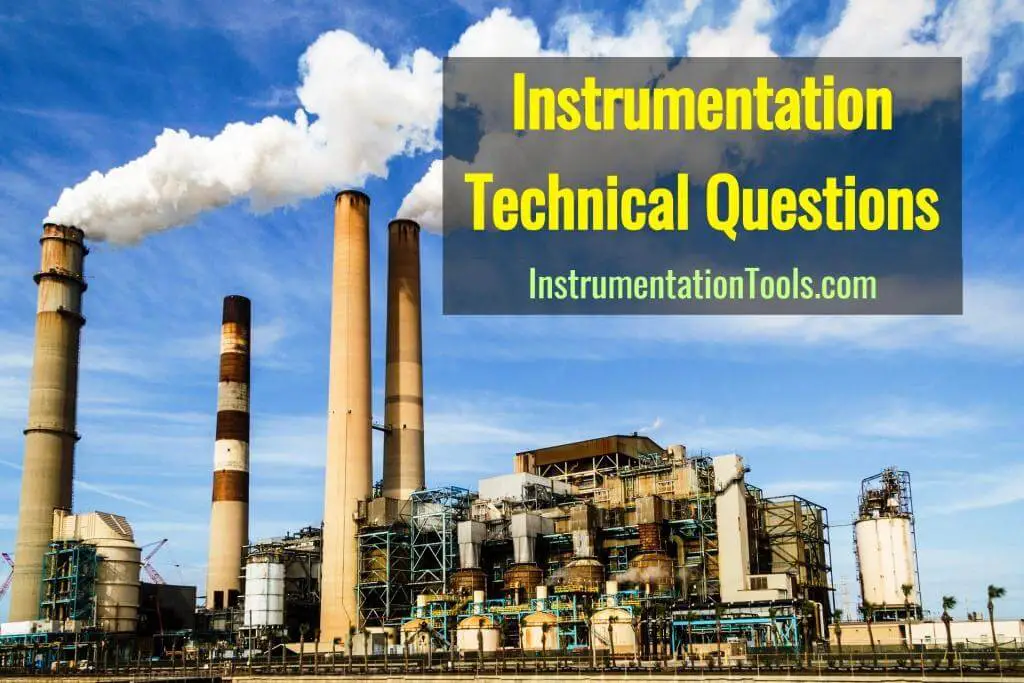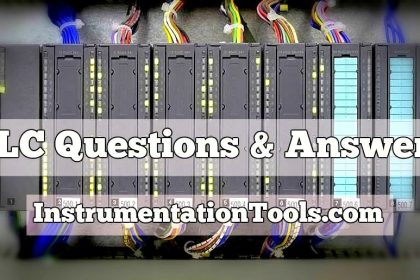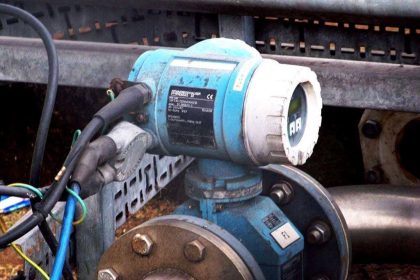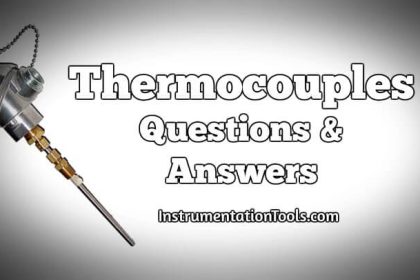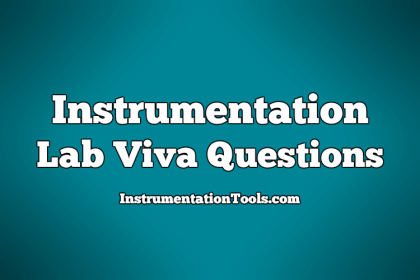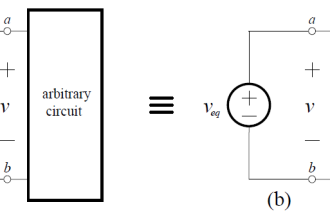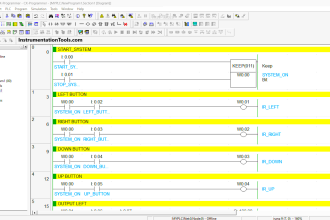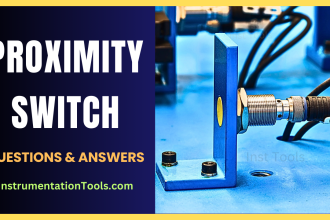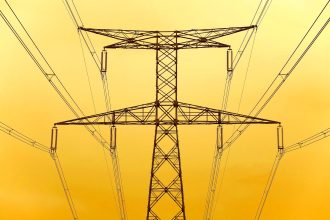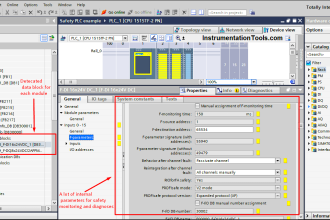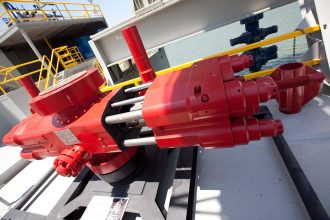This article shares the Instrumentation Technical Interview Questions and Answers which are asked during instrument engineers interview.
Instrumentation Technical Interview Questions
What is furnace draft control?
Balanced draft boilers are generally used negative furnace pressure. When both forced draft and induced draft are used together, at some point in the system the pressure will be same as that of atmosphere.
Therefore the furnace pressure must be negative to prevent hot gas leakage. Excessive vacuum in the furnace however produces heat losses through air infiltration. The most desirable condition is that the one have a very slight negative pressure of the top of furnace.
What is intrinsically safe system?
Intrinsic safety is a technique for designing electrical equipment for safe use in locations made hazardous by the presence of flammable gas or vapours in the air.
Intrinsically safe circuit is one in which any spark or thermal effect produce either normally or under specified fault conditions is incapable of causing ignition of a specified gas or vapour in air mixture at the most ignited concentration.
What is zener diode? What is voltage regulator?
The breakdown region of a p-n diode can be made very sharp and almost vertical diodes with almost vertical breakdown region are known as zener diodes.
A zener diode operating in the breakdown region is equivalent to a battery. Because of this current through zener diode can change but the voltage remains constant. It is this constant voltage that has made the zener diode an important device in voltage regulation.
Voltage regulator: The output remains constant despite changes in the input voltage due to zener effect.
What is force balance principle? State some of its’ advantages.
Force balance principle : A controller which generates an output signal by opposing torque. The input force is applied on the input bellows which moves the beam.
This crackles nozzle back pressure. The nozzle back pressure is sensed by the balancing bellows which brings the beam to balance. The baffle movement is very less about 0.002 for full scale output.
Advantages:
a. Moving parts are fewer.
b. Baffle movement is negligible
c. Frictional losses are less
What is motion balance principle?
A controller which generates an output signal by motion of its parts. The increase in the baffle is to move towards the nozzle. The nozzle back pressure will increase.
This increase in the back pressure acting on the balancing bellows, will expand the bellows. The nozzle is moved upward due to this. The nozzle will move until motion almost equals the input baffle motion.
How will you test a transistor with a multimeter?
1. Emitter +ve of meter and base -ve output =Low resistance
2. Emitter -ve of meter and base +ve output =High resistance
3. Collector +ve and base -ve output =Low
4. Collector -ve and base +ve output =Low
Emitter: Collector = High resistance
PNP: Opposite Results
Explain ratio control system?
A ratio control system is characterized by the fact that variations in the secondary variable don’t reflect back on the primary variable. A ratio control system is the system where secondary flow is hold in some proportion to a primary uncontrollable flow.
If we assume that the output of a primary transmitter is A. and the output of the secondary transmitter is B, and that the multiplication factor of the ratio relay is K, then for equilibrium conditions which means set valve is equal to measured valve, we find the following relation:
KA-B=0 or B/A = K where ‘K’ is the ratio setting off the relay.
What is solenoid valve? Where it is used?
A solenoid is electrically operated valve. It consists of solenoid coil in which magnetic plunger moves. This plunger is connected to the plug and tends to open or close the valve.
There are two types of solenoid valves:
1. Normally Open
2. Normally closed
Use: It is used for safety purpose in different electric work.
How is automatic reference junction compensation carried out in temperature recorders?
In automatic reference junction compensation, variable nickel resistor is used. As the temperature changes, so does its resistance. This reference junction compensator is located, so that it will be at the temperature of the reference junction.
The reference junction is at the poset where the dissimilar wire of the thermocouple is rejoined. This joint is invariably at the terminal strip of the instrument.
What are de-saturators?
When, in some processes, e.g. batch processes, long transient responses are expected during which a sustained deviation is present the controller integral action continuously drives the output to a minimum or maximum value.
This phenomenon is called ‘integral saturation of the control unit’. When this condition is met, then this unit is de-saturated.
Explain the working of Rota meter.
Variable area meters are special form of head meters. Where in the area of flow restrictor is varied. So as to hold the differential pressure constant. The rota meter consists of a vertical tapered tube through which the metered fluid flows in upward direction.
As the flow varies the ‘float’ rises or falls to vary the area of the passages that the differential across it balances the gravitational force on the ‘float’. The differential pressure is maintained constant. The position of the ‘float’ is the measure of the rate of flow.
What is the working principle of the magnetic meter?
An electric potential is developed when a conductor is moved across the magnetic field. In most electrical machinery the conductor is a wire.
The principle is equally applicable to a moving, electrically conductive liquid. The primary device of commercial magnetic meters consist of straight cylindrical electrically insulated tube with a pair of electrodes nearly flush with the tube walls and located at opposite end of a tube diameter.
This device is limited to electrically conducting liquids. The magnetic meter is particularly suited to measurement of slurries and dirty fluids.
Explain the mechanism behind the turbine meter.
Turbine meters consist of straight flow tube within which a turbine or fan is free to rotate about it s axis which is fixed along g the centre line of the tube. Mostly, a magnetic pick up system senses the rotation of the rotor through the tube walls. The turbine meter is a flow rate device
since the rotor speed is directly proportional to the flow rate. The output is usually in the form of electric pulses from the magnetic pick up with a frequency proportional to the flow rate.
How would you choose differential range?
The most common range for differential range for liquid measurement is 0-100. This range is high enough to minimize the errors caused by unequal heads in the seal chambers.
It is also dependent on the differences in the temperature of the load lines. The 100 range permits an increased in capacity up to 400. While decrease down up to 20 by merely changing the range tubes or range adjustments.
